Serigraph on Paper, 28" x 38.75" with deckled edges
Limited Edition of 850 Arabic Numbers, 99 Patrons' Collection, 155 Collaborators' Proofs and 5 Hors d'Commerce
The Creative Process
Dr. Seuss’s savvy in production matters was legendary at Random House and, as their staff confirmed, he was in total control of not only his verse, but also his color selections.
Artistically, Ted Geisel’s genius is often hidden away in the overlooked nuances of his preliminary works. Consider the visual insights discovered within the newest release – I like them, Sam-I-am.
Example of the color charts Ted Geisel worked with creating his books.
Color Saturation
Ted had long since memorized the color charts and knew exactly which hues he wanted for each element of every page. Here we witness this as he directs the production team on color saturation using handwritten notations from 40 to 100%. Dr. Seuss instinctively knows exactly what is needed to accomplish his trademark look and feel.
Perfection
As an artistic and literary perfectionist, Ted Geisel worked and reworked his writing and illustrations, often up to the moment the books went to press. A number of the preserved artworks found within the Dr. Seuss archives reveal glimpses of this process. I like them, Sam-I-am shows Ted changing the page numbers at the top from 56–57 to 58–59. This handwritten clue tells us that in the late stages of completion, he reworked and included an additional two-page spread somewhere within Green Eggs and Ham. Just where is anybody’s guess.
White Bone
To create something exceptional, your mindset must be relentlessly focused on the smallest detail. – Giorgio Armani.
Details were important to Dr. Seuss, especially when it came to his color notations, which often expanded into full-blown color charts. Here his notation “white bone” may seem inconsequential, but artistically it’s the detail that gives a visual pop to the most famous ham in literary history.
A Treasured Tribute
“The members of Princeton University’s Class of 1985 had no reason to know that Ted had spent many months in pain, in and out of clinics and medical offices, determined to live but refusing to do it his doctors’ way. It might have surprised them to know how craftily his wife had encouraged him to go to New Jersey to accept one more honorary degree. When he stood and moved toward the lectern they sprang to their feet and thundered in unison, ‘I am Sam! Sam I am!’ and then proceeded to chant the full text of Green Eggs and Ham. Nothing that medicine could do for him gave Ted such a lift as that welcome at Princeton. Warmed by its memory, he returned to his studio and completed a Dr. Seuss book based on his recent illnesses—You’re Only Old Once!”
(Dr. Seuss & Mr. Geisel, p. 261)
Critical Acclaim
“Ted took ‘the common phrase, ham and eggs,
and commanded attention by reversing it.
Ted’s stuff,’ [Chuck] Jones said, ‘has that quality of puzzlement.’”
Frequent collaborators, Chuck Jones and Theodor Seuss Geisel.
“The animator Chuck Jones offered an insider’s critique of Green Eggs. Oddity, he argued, is the key to such creativity; the most interesting thing is the unexpected. Ted took ‘the common phrase, ham and eggs, and commanded attention by reversing it. Ted’s stuff,’ Jones said, ‘has that quality of puzzlement.’”
“Critics did not overlook the Seussian tone of defiance. Sam-I-am drives his victim crazy, pursuing him everywhere while he urges him to eat something disgusting. Literature had seldom afforded children an opportunity to ally themselves with such open antagonism. Ted was building on the breakthrough of The Cat in the Hat, whose boisterous rampage in the absence of adults went unpunished, alarming some of the school establishment who felt safer with Dick and Jane and considered the Cat ‘a trickster hero.’” (Dr. Seuss & Mr. Geisel, p. 170-171)





